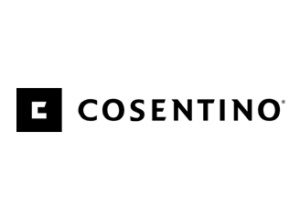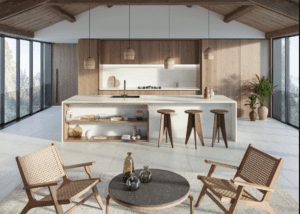From Quartz to Cutting-Edge: The Rise of Sintered Stone and Mineral Surfaces in Modern Design
As the engineered stone industry continues to evolve, a significant shift from traditional quartz surfaces to more advanced alternatives is underway. This transition is championed by sintered stone and mineral surfaces, terms now often used interchangeably, though with distinct nuances worth noting.
Understanding Sintered Stone and Mineral Surfaces
The term “sintered stone” was initially popularized by Lapitec, a leader in the industry, to describe their unique process of creating extremely durable surfaces by using technology that mimics natural stone formation. This involves subjecting natural minerals to intense heat and pressure, resulting in a highly compact material with superior properties. The term became synonymous with others like Ultracompact (used by Dekton), and is now widely used (somewhat incorrectly) for surfaces that undergo a heating, or sintering process in their manufacture, and has lost some of its cache due to its overuse in its generic category of “sinter” meaning “to heat.”
On the other hand, “mineral surfaces” is a newer term and intended from its outset to not limit the category to a single brand, but cover the broader category that includes products like Neolith, Dekton and Lapitec, and some of the large-format porcelain products as well as new engineered surfaces that are eliminating crystalline silica from their manufacture by altering the mineral composition of the slabs. These surfaces are also made from natural minerals but can involve different manufacturing processes. While sintered stone is a specific type of mineral surface, not all mineral surfaces are sintered stone.
Why Move Away from Quartz?
Quartz surfaces, while aesthetically pleasing, often contain high levels of crystalline silica and are bonded with resin. These components have raised health and environmental concerns, prompting the industry to seek alternatives. Quartz is also prone to discoloration when exposed to heat or UV light, prompting the search for more resilient materials.
The Superiority of Sintered and Mineral Surfaces
Sintered stone and mineral surfaces address the limitations of quartz by offering:
- Health and environmental safety: They are manufactured without resins and contain little to no crystalline silica, reducing health risks associated with their use and manufacture.
- Durability and resistance: Both sintered stone and mineral surfaces are known for their heat resistance, UV stability, and scratch resistance, making them suitable for a variety of applications, both indoors and outdoors.
- Maintenance ease: These surfaces are non-porous, which means they do not require sealing and are easy to clean, simplifying maintenance and enhancing their appeal in both residential and commercial spaces.
- Versatility: The robust nature of these materials makes them ideal for numerous applications, from kitchen countertops to outdoor environments, offering designers and homeowners versatile design options.
Frequently Asked Questions About Sintered and Mineral Surfaces
- Are these surfaces scratch-resistant? Yes, their composition ensures high resistance to scratches, suitable for heavy-use environments.
- Can they handle heat? Both materials excel in heat resistance, capable of withstanding high temperatures without damage.
- Are they easy to maintain? Yes, their non-porous nature means simple cleaning routines are effective, with no need for special sealants.
- Can they be used outdoors? Absolutely. Their resistance to weather elements makes them perfect for external applications like pool surrounds and patio counters.
- Are they food-safe? Yes, the hygienic properties of non-porous surfaces make them safe for food preparation areas.
Conclusion: Embracing the Future with Sintered and Mineral Surfaces
The move towards sintered and mineral surfaces represents a progressive step in the engineered stone market, driven by the need for more sustainable, durable, and versatile materials. Emerging brands finally getting a solid foothold as quartz demand is waning include Lapitec, Dekton and Neolith. New engineered stone formulations are emerging continuously as Cosentino pushes toward Hybriq10 and Hybriq0, and Caesarstone and others offer low and no siica variants of what were formerly their flagship quartz surfaces. As these materials continue to gain popularity, they are set to redefine standards in both residential and commercial design, marking a new era of surface technology that leaves traditional quartz behind.



















